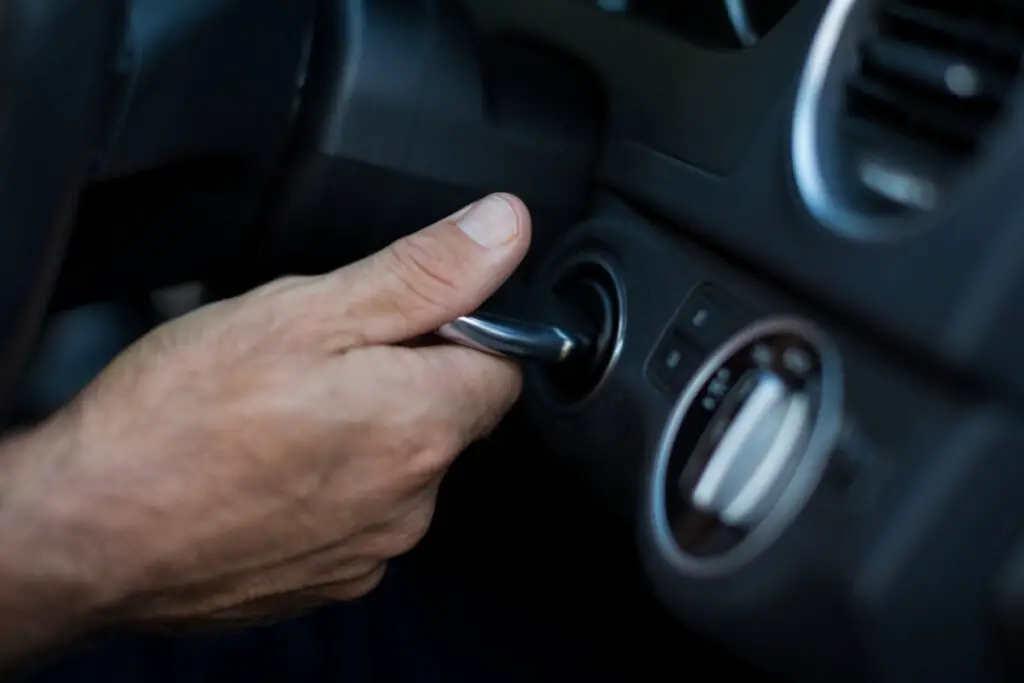The biggest problem your truck could have, among many others, is when your Ford F-150 tries to start but stalls out.
This may be due to various issues with the vehicle’s components.
In this article, find out why your Ford F-150 is having a problem starting but not staying on and if there is something you can do to fix the problem without going to the mechanic.
Advertising links are marked with *. We receive a small commission on sales, nothing changes for you.
Why Does My Ford F-150 Start But Don’t Keep Running?

It may be quite unsettling if your Ford F-150 starts but suddenly stops. Most likely, there is a problem with the fuel or electrical systems. However, there may also be additional factors.
The engine in your F150 needs three things to operate continuously and in the right amounts:
- Air
- Fuel
- Spark
Your car may receive all three at first when it starts up but stops right away, indicating that something prevents it from obtaining all three regularly.
All three of these systems activate when you flip the key to the on position, allowing you to start your F-150. Once you press the starter, the engine begins to turn gently. The engine starts running on its own as soon as it receives adequate gasoline, air, and spark.
The starter has disengaged at this stage, necessitating a continuous fuel supply for the car. The engine will shut down if the fuel pressure is insufficient to satisfy the demands of the vehicle.
This is one of the most frequent causes of a car starting once and then dying.
Modern cars have sophisticated computer systems that can quickly explain why a vehicle is dying when you start it. Before beginning any manual diagnosis, we advise checking to see if there are any OBD2 codes.
If you want to find out why Ford f150 turns over but does not start, keep reading!
#1: Inadequate Fuel Pressure
A lot of fuel pressure is required for modern fuel-injected engines to continue operating. They can only function correctly if the pressure is proper. Unfortunately, you could not have adequate fuel pressure for a few reasons.
For example, a gasoline pump might be malfunctioning. The fuel pump delivers sufficient fuel pressure to start the engine but insufficient fuel pressure to maintain it. The gas tank houses the fuel pump.
However, most engines feature a port that enables you to use a gauge that you can either rent or buy from a store to check the fuel pressure.
Observe the fuel pressure as you turn the key to the “on” position. Does the fuel pressure start to drop right away? Does it terminate at zero? It’s probably the fuel pump relay if it goes all the way to 0 and doesn’t return.
It’s most likely a faulty fuel pump or filter; if it drops lower, the engine shuts off, but the fuel pressure rises again.
A skilled mechanic using a reliable scanner may check the voltage at the fuel pump relay to see if it receives a steady power supply.
#2: Sparks
Individual coil packs power the majority of current cars. Some older engines, however, are not.
A bad coil can start a car with a distributor engine, but it might need more spark to keep it going.
If you have this problem, consult your mechanic for additional help.
#3: Mass Airflow Sensor
The mass airflow, or “MAF,” sensor measures how much air is blown into the engine of your Ford F-150.
It is located between the throttle body and the air filter. Therefore, it is one of the car’s most crucial parts to calculate the air/fuel ratio.
It is known to cause the automobile not to start if it is not correctly delivering a suitable reading. First, verify that it is plugged in securely by looking at the wiring harness surrounding it.
Make sure the wire is not burned, frayed, or otherwise damaged by following it as far as possible.
If you decide to clean it, use a cleaner to clean the sensor and nothing else.
#4: Problems With The Ignition
The systems of your Ford F150 only turn on when you press the starter. When the ignition lock is worn out, this problem arises.
In essence, only while the starter is engaged is the vehicle ordered to “be on,” and when the key is released, all systems turn off. You may check a few things to see whether your car’s problem is this.
If you have another key, begin with it. It could be possible to turn on the “on” circuit and keep the car going with a more recent key in an older ignition.
Check the dashboard’s warning lights if you don’t have a spare key. If they turn on when you turn the key to the on position, this is probably not the problem.
You may require a new ignition switch if they only turn on when you turn the key in the ignition.
Never rely on the power seats, radio, or windows to determine whether the engine is running. Frequently, they are on a different circuit.
All in all, if you cannot solve this problem with the help of this article, it is possible that the only way to diagnose and fix it is to visit your mechanic.

Luna Meschiari is a full-blooded car nut who is well known to local garages, as each article is meticulously researched and peppered with the latest piece of information. Guess what car she’s driving right now? A RAV4 2021 Hybrid. But her heart also sleeps for pickups like the F-150. Get to know Luna better on the about us page.
Advertising links are marked with *. We receive a small commission on sales, nothing changes for you.
